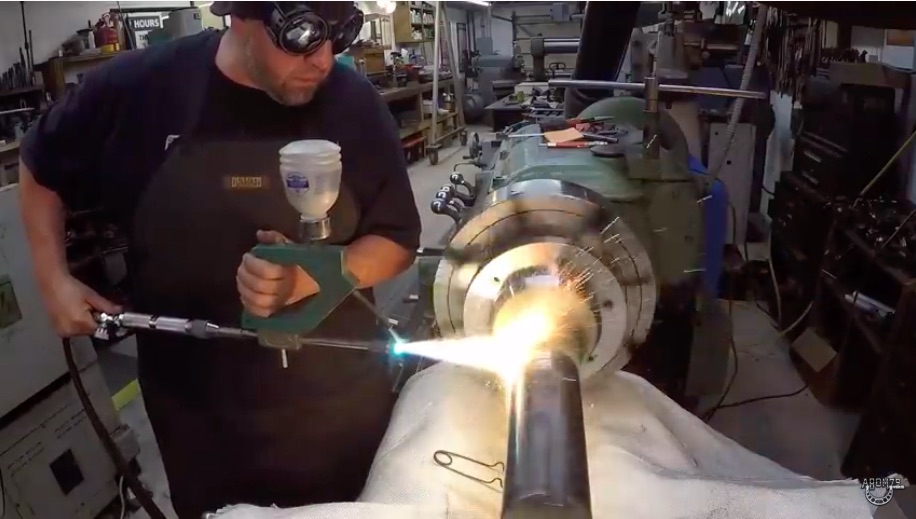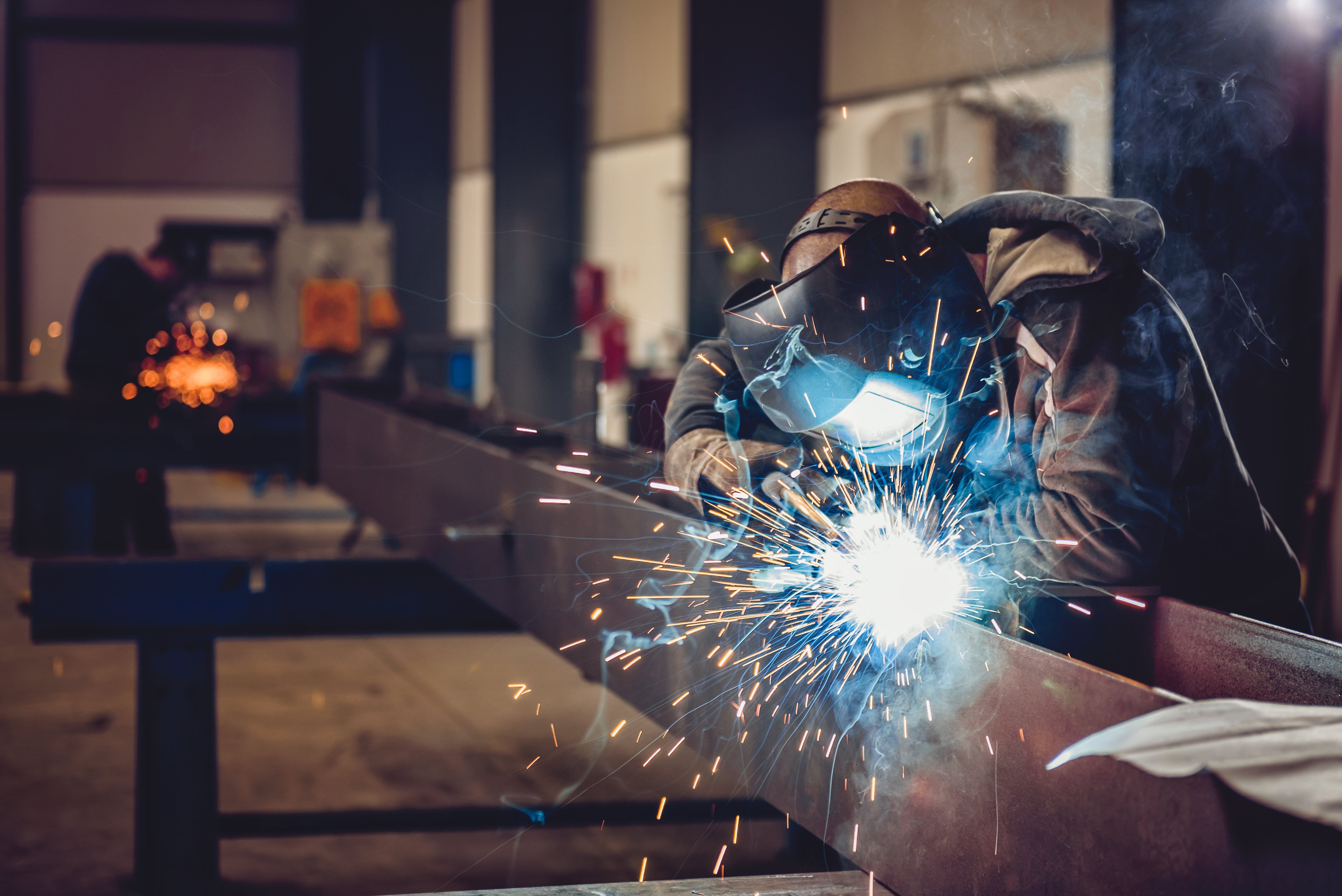Typical Welding Fixing Issues and Exactly How to Address Them Properly
Welding repairs commonly run into an array of concerns that can jeopardize the stability of the end product. Typical problems include insufficient penetration, porosity, and imbalance, among others. Each problem offers distinct difficulties that call for particular methods for resolution. Comprehending these problems is essential for welders intending to improve their abilities and results. This discussion will check out these common welding repair work issues and effective methods to resolve them.
Poor Penetration
Insufficient infiltration occurs when the weld steel falls short to fully fuse with the base product, leading to weak joints and prospective structural failures. This concern usually stems from insufficient warmth input, wrong electrode angle, or improper welding rate. Welders may come across insufficient infiltration due to a mistake of the essential specifications for a certain material thickness or kind. In addition, contamination on the base material's surface area can prevent reliable bonding, aggravating the trouble. To address insufficient infiltration, welders must guarantee ideal settings on their tools and preserve a tidy work surface area. Regular inspection of welds is recommended to recognize any shortages early, permitting for timely modifications and the avoidance of compromised structural honesty in welded assemblies.
Porosity
Porosity is an usual issue in bonded joints that materializes as small gas bubbles trapped within the weld metal. This defect can endanger the integrity of the weld, causing reduced toughness and prospective failure under stress. Montana Mobile Welding and Repair Fabrication. Porosity typically emerges from contamination, moisture, or incorrect welding strategies, which permit gases to leave right into the molten weld pool. To deal with porosity, welders need to ensure proper surface prep work, maintain a clean workplace, and utilize appropriate welding criteria. In addition, choosing the ideal filler product and shielding gas can minimize gas entrapment. Normal evaluation and testing of welds can assist determine porosity early, assuring prompt rehabilitative actions are taken, thus protecting the quality and integrity of the welded structure
Misalignment
Imbalance in welding can arise from numerous factors, including inappropriate configuration and thermal growth. Recognizing the source is crucial for efficient resolution. Numerous improvement strategies are available to realign parts and assure architectural stability.
Reasons for Imbalance
Welding imbalance usually originates from a range of underlying problems that can compromise architectural stability. One main reason is incorrect fit-up of parts prior to welding, which can lead to gaps and uneven surface areas. Variants in thermal expansion throughout the welding procedure can likewise lead to distortion, particularly if the materials being signed up with have various coefficients of development. Additionally, insufficient securing and fixturing might stop working to hold parts safely in position, leading to motion during welding. Poorly conserved tools, consisting of welding devices and tools, might introduce disparities in the weld grain, additional contributing to imbalance. Driver error, stemming from not enough training or experience, can also play a substantial function in developing misaligned welds.

Correction Techniques Offered
Attending to imbalance properly needs a mix of rehabilitative strategies customized to the specific issues at hand. One common technique is the use of components or jigs to hold components in the appropriate position during welding, making sure regular placement. In addition, pre-heating the products can assist minimize distortion and enhance fit-up. For considerable misalignment, mechanical adjustment strategies, such as making use of hydraulic jacks or clamps, can be utilized to fix the position before welding. Post-weld warm therapy might additionally be required to ease stresses brought on by imbalance. Lastly, careful inspection and change throughout the configuration phase can prevent imbalance problems from coming to be significant problems, advertising a smoother welding procedure and boosting total structural honesty.
Distortion
Distortion is a typical obstacle in welding that can occur from numerous factors, including irregular cooling and heating. Recognizing the sources of distortion is necessary for implementing efficient avoidance strategies. Addressing this problem not just boosts structural integrity however additionally boosts the overall high quality of the weld.
Reasons for Distortion
When subjected to the intense warmth of welding, materials typically go through changes that can cause distortion. This sensation primarily occurs from thermal development and tightening throughout the welding procedure. As the weld location warms up, the material expands; upon cooling, it acquires, which can produce interior stress and anxieties. In addition, irregular home heating throughout a work surface can intensify these tensions, leading to bending or bending. The type of product likewise plays a considerable duty; metals with varying thermal conductivity and coefficients of development might respond differently, leading to unpredictable distortions. Inadequate joint layout and insufficient fixturing can contribute to misalignment throughout welding, boosting the possibility of distortion. Comprehending these causes is vital for efficient welding repair work and avoidance strategies.
Prevention Techniques
Reliable prevention techniques for distortion throughout welding emphasis on controlling warmth input and ensuring correct joint style. Maintaining a regular warmth input assists to reduce thermal expansion and contraction, which can lead to distortion. Utilizing methods such as pre-heating the workpiece can also reduce the temperature gradient, advertising uniform home heating. Furthermore, selecting ideal joint styles, such as T-joints or lap joints, can enhance security and minimize stress focus. Implementing proper fixturing to protect the work surfaces in position better help in maintaining placement Read More Here during the welding procedure. Staggered welding sequences can disperse warmth a lot more evenly, preventing local distortion. By using these methods, welders can considerably reduce the chance of distortion and enhance the total high quality of their welds.
Fracturing
Cracking is a common issue come across in welding repairs, typically resulting from numerous elements such as incorrect cooling rates, product choice, or poor joint prep work. The incident of fractures can significantly jeopardize the honesty of the weld, leading to prospective failures during operation. To resolve this concern, welders must first evaluate the root triggers, making sure that products are suitable and suitably picked for the details application. In addition, regulating the cooling rate throughout the welding process is crucial; rapid air conditioning can generate stress and cause fracturing. Proper joint design and preparation additionally add to lessening the threat. Implementing these strategies can enhance weld quality and sturdiness, eventually minimizing the probability of fracturing in finished weldments.

Incomplete Combination
A substantial concern in welding repair work is incomplete combination, which occurs when the weld metal does not properly bond with the base material or previous weld passes - Belgrade Welding. This issue can lead to weak points in the joint, potentially compromising the honesty of the welded framework. Aspects contributing to insufficient fusion consist of not enough warmth input, improper welding method, and contamination of the surface areas being signed up with. To address this concern properly, visit this web-site welders should guarantee appropriate pre-weld cleansing and surface area preparation, in addition to change their welding criteria to achieve appropriate infiltration and blend. Regular examination during the welding process can likewise assist recognize incomplete blend early, permitting for prompt corrective measures to boost the general quality of the weld
Overheating
While welding repairs can enhance architectural integrity, overheating offers a substantial difficulty that can result in material deterioration. Excessive heat during welding can modify the mechanical buildings of steels, causing minimized stamina, raised brittleness, and bending. This phenomenon is specifically essential in high-stress applications where structural reliability is vital. Identifying overheating can include aesthetic inspections for staining or distortion, in addition to checking temperature during the welding process. To reduce the threats connected with overheating, welders ought to use proper methods, such as managing heat input, readjusting travel speed, and making use of appropriate filler materials. Additionally, implementing pre- and post-weld warmth therapies can assist restore material residential properties and improve the overall quality of the fixing, making sure long-lasting efficiency and security.
Regularly Asked Inquiries
What Are the Typical Signs of a Welding Flaw?

How Can I Examine My Welds for Quality?
To check welds for high quality, one can utilize visual evaluations, ultrasonic testing, and radiographic techniques. Each method ensures architectural honesty, recognizes defects, and confirms adherence to defined standards, eventually boosting the reliability of the welded joints.
What Security Preventative Measures Should I Take While Welding?
When welding, one should prioritize safety and security by wearing ideal individual protective equipment, making certain appropriate ventilation, safeguarding combustible products away, keeping a clean work space, and understanding environments to avoid mishaps and injuries.
Can I Repair a Weld Without Remodeling the Entire Joint?
Fixing a weld without redesigning the entire joint is feasible, depending upon the damage (Montana Mobile Welding and Repair Welding). Techniques such as grinding, including filler product, or making use of a welding process can effectively resolve certain defects while maintaining the surrounding framework
What Equipment Are Important for Effective Welding Fixes?
Necessary devices for effective welding fixings consist of a welding machine, cord brush, mill, protective equipment, clamps, and filler products. Each device plays a crucial role in ensuring high quality and safety and security during the fixing process. Porosity typically develops from contamination, wetness, or inappropriate welding techniques, which enable gases to run away into the molten weld swimming pool. Inadequately maintained tools, including welding makers and tools, might introduce variances in the weld bead, additional contributing to imbalance. When subjected to the extreme heat of welding, materials commonly undergo modifications that can lead to distortion. Fracturing is a common issue come across in welding fixings, frequently resulting from different variables such as improper cooling prices, material option, or insufficient joint prep work. A substantial problem in welding repair work is insufficient blend, which happens when the weld metal does not effectively bond with the base product or previous weld passes.